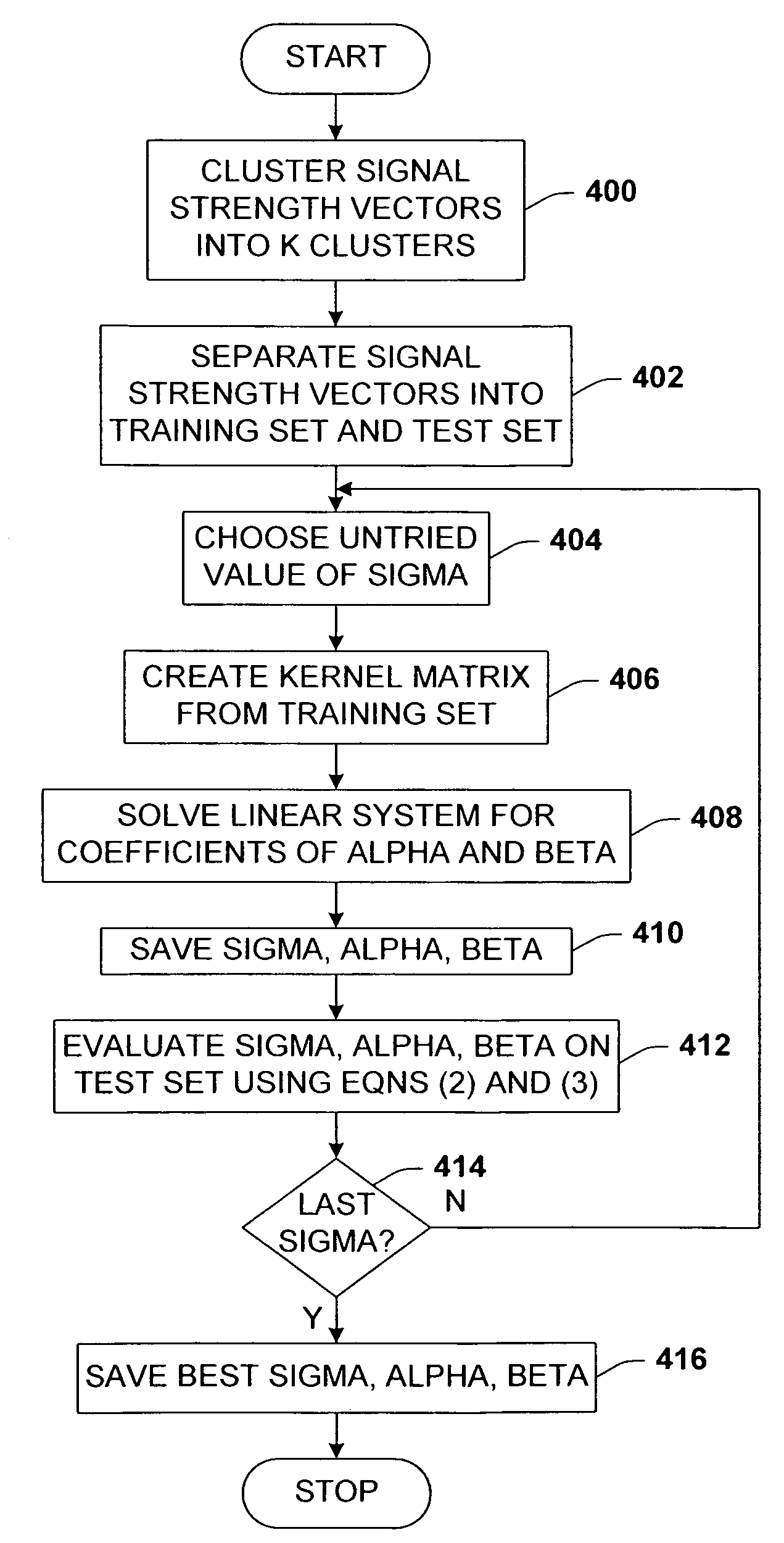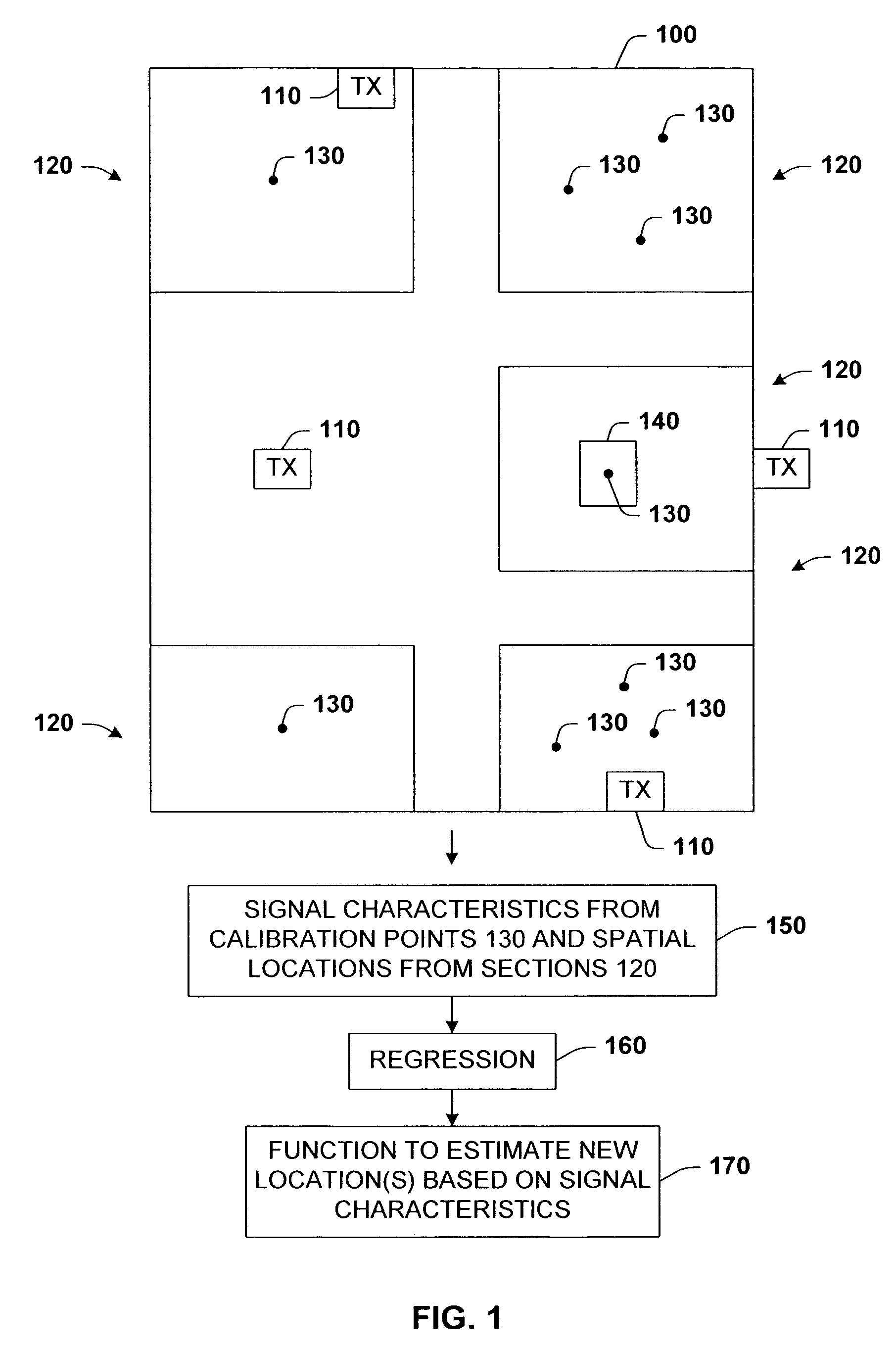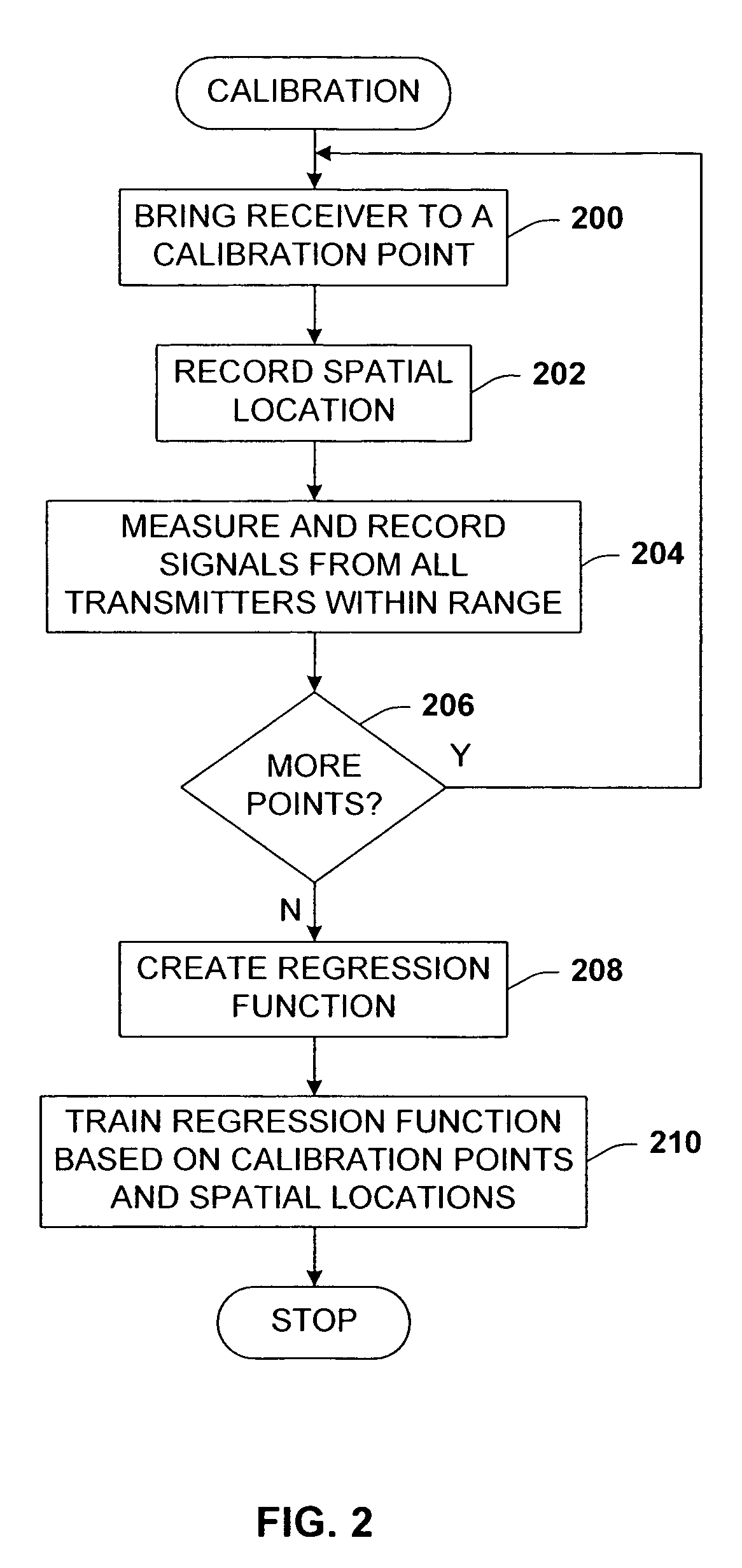Calibration of a device location measurement system that utilizes wireless signal strengths
a wireless signal strength and location measurement technology, applied in direction finders using radio waves, navigation instruments, instruments, etc., can solve the problems of requiring tedious and time-consuming manual labor, administrators are reluctant to even keep the location of printers updated, and the accuracy of the level of accuracy is high. , to achieve the effect of reducing nois
- Summary
- Abstract
- Description
- Claims
- Application Information
AI Technical Summary
Benefits of technology
Problems solved by technology
Method used
Image
Examples
application examples
[0057]As indicated above, the location algorithm of the present invention works based on regression of signal strength training data taken from known room locations.
[0058]Referring now to FIG. 5, there is illustrated a layout of a typical office floor 500 of rooms 502 utilized for a sample application of the calibration process of the present invention. The floor 500 includes 132 rooms 502 of which 118 were accessible. The area of the floor 500 is approximately 2,680 square meters. The floor was taken to be region 100. The building maps of the floors were extracted both as polygon representations and bitmaps. The coordinates of all maps were expressed in actual floor coordinates in meters. The algorithm was evaluated on the one floor 500 with the 118 different rooms.
[0059]To study the problem of calibration effort, the amount of calibration data was reduced as if less time was spent in each room and as if certain rooms had been skipped. The 118 rooms were split into 137 sections, si...
PUM
 Login to View More
Login to View More Abstract
Description
Claims
Application Information
 Login to View More
Login to View More - R&D
- Intellectual Property
- Life Sciences
- Materials
- Tech Scout
- Unparalleled Data Quality
- Higher Quality Content
- 60% Fewer Hallucinations
Browse by: Latest US Patents, China's latest patents, Technical Efficacy Thesaurus, Application Domain, Technology Topic, Popular Technical Reports.
© 2025 PatSnap. All rights reserved.Legal|Privacy policy|Modern Slavery Act Transparency Statement|Sitemap|About US| Contact US: help@patsnap.com



